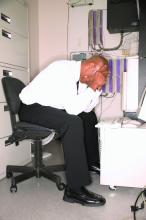The parade of doctors leaving private practice for an employee position shows no sign of slowing.
In July 2012, an estimated 95,000 physicians (26%) were hospital employed. By July 2015, that number grew to 141,000 (38%), according to study conducted by Avalere for the Physicians Advocacy Institute. The biggest leap occurred between July 2014, when 114,000 physicians were listed as employees, to January 2015, when 133,000 were listed.
The speed at which physicians are leaving private practice is unexpected by the physician community.“They [most physicians] know a physician or two or a practice that has made that move to become employed, but I think many of them are quite surprised, if not shocked to see the tremendous transition over such a short period of time,” said Matthew Katz, PAI board member and CEO of the Connecticut State Medical Society.
Similarly, the number of hospital-owned physician practices grew from 36,000 (14%) in July 2012 to 67,000 (26%) in July 2015.
Regionally, by July 2015, almost half (49%) of Midwest physicians were hospital employed, while just over a quarter (27%) were in Alaska and Hawaii.
Mr. Katz said that he is hearing that the shift is having an impact on the practice of medicine. While certain aspects, such as physician autonomy, are among common issues raised with employment, he noted that referrals can also be an issue as doctors move from private practice to an employed status.
Many of the physicians he spoke with “have said that it is in some respects limiting them in what they can do and who they can refer to because they are losing their referral base in the community. When physicians become employed, they may no longer be accessible to those community-practicing physicians.”
He continued: “I have not talked to those physicians who have recently become employed to see what they think of their transition, but in talking to the physicians who remain in the community, they are concerned about the loss of those community physicians, the loss of the referral base, the loss of who to send their patients to who are no longer in the community and are now employed and working for the hospital. They seem to, in some respects, have lost touch with some of them once they transitioned to an employment status.”
Kelly Kenney, executive VP at PAI, said that there are some benefits to moving toward hospital-based employment, particularly with the reporting requirements attached to the many quality programs and the IT infrastructure that is a necessary part of it.
“Some physicians who have moved to employment say it just got to be too much,” Ms. Kenney said.
Mr. Katz added that private practice remains an option for most.
“We are still seeing some physicians, at least here in Connecticut and in other places around the country going into private practice trying to make a go of it,” he said. “I don’t think this is the death knell of private practice. I think that the pendulum definitely has swung in one direction, and I believe it will swing back a bit. I think that this will highlight what private practice physicians are facing and the barriers that exist today that did not exist a few years ago.”
He said that he hopes regulators, medical societies, and others step up in education efforts and other assistance to help small and solo practitioners navigate the value-based payment waters and give them the tools to stay in private practice.
Ms. Kenney noted that the flexibility of when physicians can start to meet reporting requirements under MACRA will help.
Mr. Katz added that the Department of Justice can do its part to help the small and solo practices by blocking the any of the mega-insurance mergers that are being proposed. He expressed concern that as insurers get bigger, the ability for small and solo practices to negotiate with them goes away and could be another driver to send physicians into employed situations.


